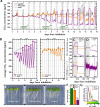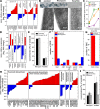Stress response to CO2 deprivation by Arabidopsis thaliana in plant cultures
- PMID: 30865661
- PMCID: PMC6415875
- DOI: 10.1371/journal.pone.0212462
Stress response to CO2 deprivation by Arabidopsis thaliana in plant cultures
Abstract
After being the standard plant propagation protocol for decades, cultures of Arabidopsis thaliana sealed with Parafilm remain common today out of practicality, habit, or necessity (as in co-cultures with microorganisms). Regardless of concerns over the aeration of these cultures, no investigation has explored the CO2 transport inside these cultures and its effect on the plants. Thereby, it was impossible to assess whether Parafilm-seals used today or in thousands of older papers in the literature constitute a treatment, and whether this treatment could potentially affect the study of other treatments.For the first time we report the CO2 concentrations in Parafilm-sealed cultures of A. thaliana with a 1 minute temporal resolution, and the transcriptome comparison with aerated cultures. The data show significant CO2 deprivation to the plants, a drastic suppression of photosynthesis, respiration, starch accumulation, chlorophyll biosynthesis, and an increased accumulation of reactive oxygen species. Most importantly, CO2 deprivation occurs as soon as the cotyledons emerge. Gene expression analysis indicates a significant alteration of 35% of the pathways when compared to aerated cultures, especially in stress response and secondary metabolism processes. On the other hand, the observed increase in the production of glucosinolates and flavonoids suggests intriguing possibilities for CO2 deprivation as an organic biofortification treatment in high-value crops.
Conflict of interest statement
The authors have declared that no competing interests exist.
Figures



Comment in
-
Unbreathing seal.Nat Plants. 2019 Apr;5(4):336. doi: 10.1038/s41477-019-0414-z. Nat Plants. 2019. PMID: 30918355 No abstract available.
References
-
- Search for +("petri dish" OR "petri dishes") +"arabidopsis"; 2018.
Publication types
MeSH terms
Substances
LinkOut - more resources
Full Text Sources
Molecular Biology Databases

